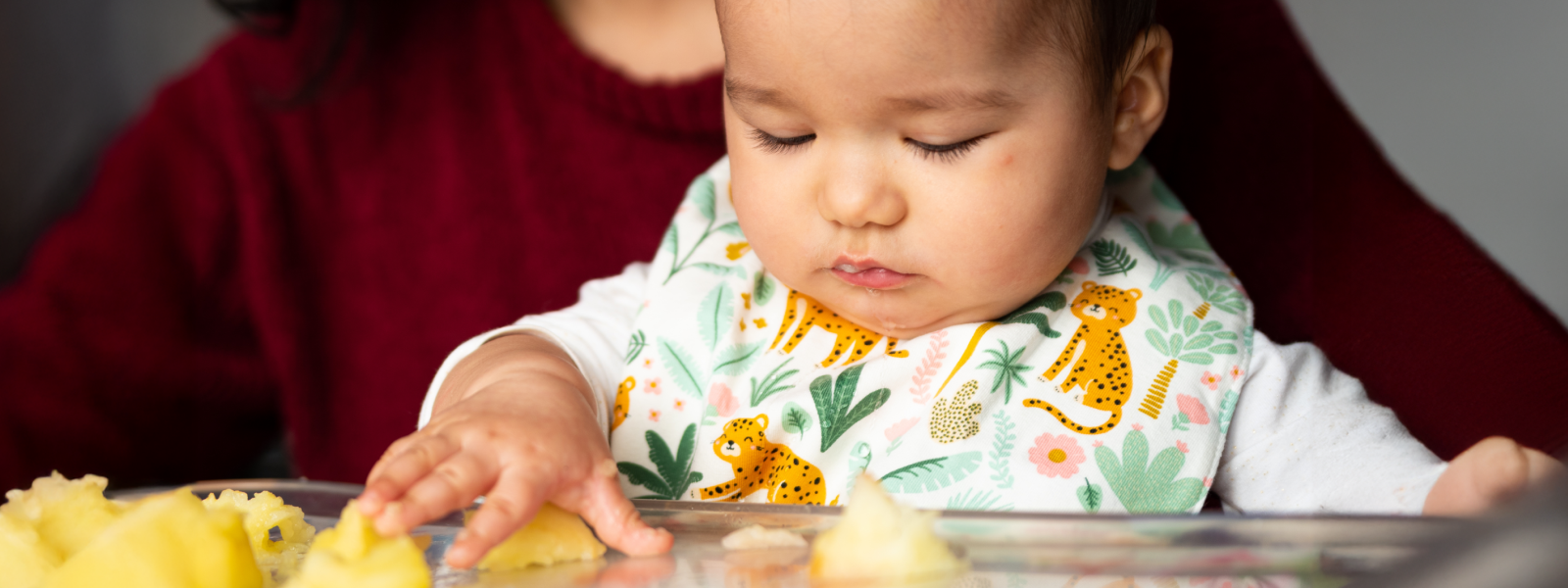Introducing your baby to a variety of tastes and textures is a wonderful way to support their physical and sensory development. One of the most exciting milestones is when your baby starts eating finger foods. These early experiences go beyond simply feeding; they offer a chance to introduce your little one to new textures, flavours, and smells that will shape their relationship with food for years to come.
When to offer finger foods
Around eight months of age, babies may start to show interest in grasping small bits of food. At first, they’ll likely use their whole hand, but with practice they may refine their skills and start using their thumb and forefinger to pick up smaller bits of food with their pincer grip. This is a natural step in developing fine motor skills.
Encourage them to try different foods in the next few months. The more they experiment with different tastes and textures, the more they’ll build diverse food preferences as they approach their first birthday.
At the family table
When introducing finger foods, make sure your baby is seated and supervised while eating. Giving baby a sturdy plate or bowl with large openings will help them pick up food with their fingers more easily. And don’t worry about the mess! Finger feeding is not only fun, but an important way for your baby to learn about food, develop hand-eye coordination, and nurture their independence.
Snack and meal ideas
Babies have small tummies, so small meals and snacks work best. When introducing finger foods, it’s best to start with soft, easy-to-grasp options. Offer bite-sized pieces of soft foods like steamed veggies or fruits, like ripe banana pieces. Foods that dissolve quickly in the mouth and are easy to pick up, like well-cooked pieces of pasta, can also be introduced.
When your baby starts to get the hang of chewing soft foods, you can gradually introduce more textured foods like grain snacks and bits of toast. Between eight to 12 months, your baby may be able to bite, and chew chopped foods and a greater variety of finger foods, including small pieces of soft meats, poultry, scrambled eggs, and cooked beans.
You can also start offering foods from family meals (if they are made with little or no added salt or sugar). As you introduce finger foods, always be mindful of choking hazards. Avoid foods that can be swallowed whole, like grapes, whole nuts, or chunks of raw veggies.
Keep track with our Baby Feeding Log
A handy-dandy way to keep tabs on all of baby’s feeds, wet diapers, and sleep patterns is with our free printable tracker. It makes logging baby’s feeding journey a breeze!
Top Takeaways: Embrace the mess!
Introducing finger foods is an exciting time in baby’s development. Though it may get messy, this stage is essential. The textures and colours of baby’s food will stimulate their senses, and the variety of flavours they experience will lay the foundation for healthy eating habits in the future. So, embrace the mess and celebrate every bite with baby!
Please consult your doctor if you have any questions about your baby’s feeding progress or diet.
HealthLink BC, 2024. Baby’s First Foods. Accessed April 2025. https://www.healthlinkbc.ca/healthlinkbc-files/babys-first-foods










